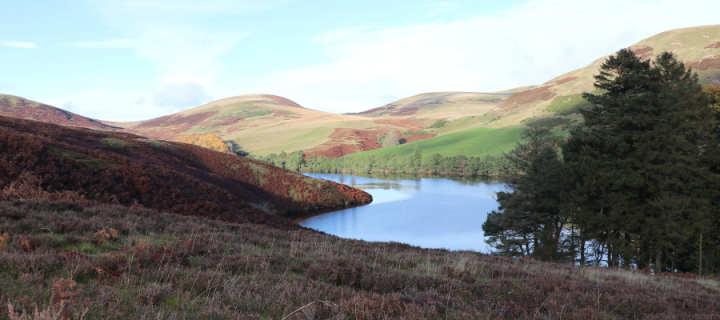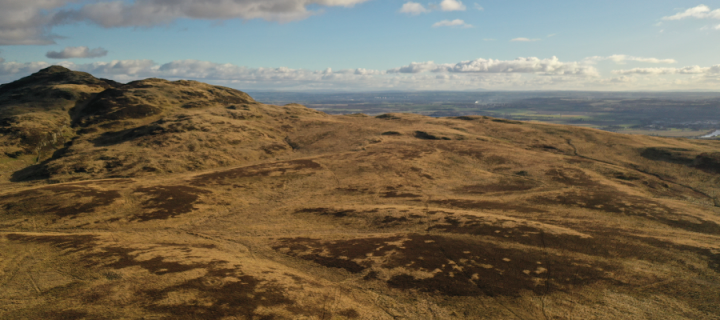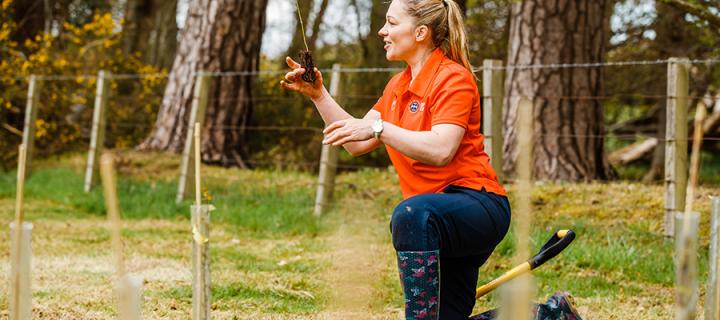Carbon sequestration
The University is taking responsibility for unavoidable carbon emissions by direct sequestration rather than participating in carbon offsetting schemes.
The University generates carbon emissions during many of its activities, such as when heating our buildings, using non-electric vehicles and flying for business travel.
In order to become net zero carbon by 2040, the University is:
- reducing its emissions where there is a technical possibility to do so; such as by electrifying our vehicle fleet where possible; improving the way we power and heat our buildings; and by replacing non-essential travel with alternatives where available
- sequestering carbon from unavoidable emissions, such as essential flights.
When emissions are unavoidable, such as from flying, it is important that the University calculates the amount of emissions produced and then takes action to ensure an equivalent or greater amount of carbon emissions are removed from the atmosphere.
Our carbon sequestration plan
In October 2021, the University announced a multi-million-pound, long-term commitment to capture and store its unavoidable carbon emissions, and benefit nature, through restoring peatlands and expanding forests in Scotland.
University commits to sequester over one million tonnes of unavoidable C02 emissions
Carbon sequestration is the process of capturing and storing atmospheric carbon dioxide, e.g through growing trees or capturing carbon and storing it via specialised equipment. It is recognised by the UN as an important way of dealing with carbon emissions that cannot be avoided altogether, such as from air travel.
Carbon offsetting via the voluntary carbon market is where an organisation purchases the rights to a certain amount of carbon sequestration or avoidance activity, such as planting trees or investing in renewable energy projects. While increasingly common, this method means that an organisation doesn’t always have full control or visibility over how emissions are sequestered, exposing the offset purchasing organisation to a number of risks.
The University’s approach to carbon sequestration
To ensure that our sequestration activity is robust, the University will restore forests and peatlands in Scotland itself via ‘directly controlled’ or in ‘active partnership schemes’, a form of offsetting where the client has a significant amount of control and visibility over the activities undertaken.
In addition to sequestering carbon, this programme is designed to maximise the co-benefits for biodiversity and local communities whilst generating research, teaching and learning opportunities.
We have summarised this in a paper explaining the University’s position on carbon sequestration and carbon offsets.
We ask University schools, colleges, departments and staff not to offset their own business-related emissions through carbon offsetting schemes. University emissions are being reduced, and later offset at a University-wide level rather than at a local level to manage the myriad risks associated with voluntary carbon market offset schemes.
As an institution we intend to reduce our emissions from all areas (including energy, waste, water, and travel) at a sufficient rate to achieve Net Zero Carbon by 2040. Our carbon sequestration programme is designed to offset unavoidable residual air travel emissions from 2040 onwards.
Due to the time involved in the growth cycle of trees, and in the recovery process of peatland restoration, it can take 7 to 25 years before a meaningful amount of carbon is sequestered from a sequestration project. Thus, while we are starting our work on this now, the volume of sequestration we achieve will remain relatively small until the mid 2030s before rapidly rising to meet our Net Zero by 2040 target.
For further information on best practice and the risks surrounding offsetting, a useful resource is The Oxford Principles for Net Zero Aligned Carbon Offsetting.
Please get in touch at SRS.Department@ed.ac.uk if you have further questions.
Carbon offsetting for research funding applications
Where offsetting is required for research funding applications, please email SRS.Department@ed.ac.uk to help you calculate the carbon emissions associated with the proposed research and to request guidance tailored to the funding body.
We are working with funders such as The Wellcome Trust and UKRI to understand what additional measures, if any, will be required of University of Edinburgh funding applicants once our sequestration scheme is operational. We will update this page with the latest information.
We currently have guidance for Wellcome Trust research funding applications and will create guidance for other funding bodies as they publish more information on their requirements for offsetting business travel. We are in the process of updating The Wellcome Trust guidance.
Rullion Green Wood

Drumbrae

Learning, teaching and research strategy

Branching out, an interview with Yvonne Edwards
Find out more
For more information on carbon sequestration, to seek guidance, or speak about ways staff and students can get involved, please contact the Department for Social Responsibility and Sustainability.
Please state that you wish to speak with the Forest and Peatland team in your message.
General enquiries
- Social Responsibility and Sustainability
Contact details
- Work: +44 (0)131 651 3000
- Email: SRS.Department@ed.ac.uk
- @edsust
Address
- Street
Department for Social Responsibility and Sustainability
The Boilerhouse
High School Yards- City
- Edinburgh
- Post Code
- EH1 1LT

